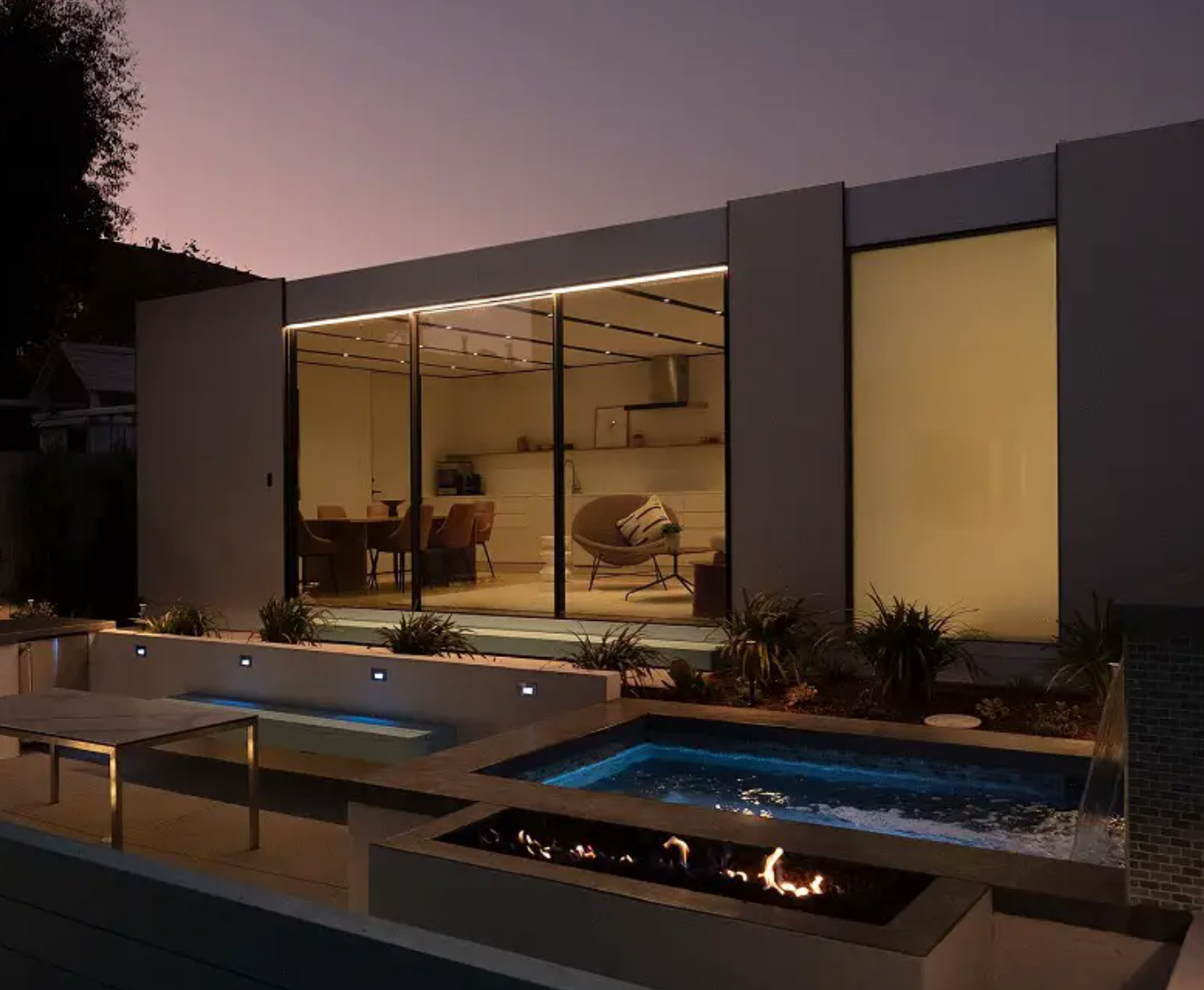Main Content
Blog
Blog Details
New Innovations in Residential Home Building
As the demand for new homes continues to increase, builders are constantly looking for ways to innovate and improve the process of building. New technologies and materials are being used to create better homes that are more affordable, efficient, durable, environmentally-friendly, and easier to maintain. From new advances in construction methods like prefabrication, to emerging sources of renewable energy, to solutions centered on home wellness and improved comfort, this blog explores how new innovations in home building can help foster better living environments for everyone. Here are several new home innovations that are commercially available or in early development stages that are addressing a wide-range of key needs.

SOLAR WINDOWS
The premise of solar windows is that invisible light (ultraviolet and infrared waves) can be converted into electricity wherever a transparent window pane can receive sunlight. Solar windows are a perfect example of an innovative feature in new homes, as they build upon a widely-adopted house feature (e.g. transparent windows for sunlight) with new technology, in this case BIPV (Building Integrated Photovoltaics). BIPV means that the capability of converting solar energy into electricity is built into the infrastructure of a house during the construction phase. In the residential space, solar windows are being positioned as a complimentary renewable energy source, and not a replacement for solar panels, as solar windows are not as efficient as panels. Though solar windows for residential applications are not readily available, Andersen Windows’ recent investment in Ubiquitous Energy (a commercial off-shoot of MIT research) is a strong signal that viable residential solar windows will soon come to fruition. This solar product type is also referred to as “transparent solar panels” and “energy producing windows”.

DUCTLESS MINI-SPLIT HVAC SYSTEMS
Ever argued over the temperature? Someone thinks that it’s too hot, while someone else feels that it’s too cold. Ductless mini-split HVAC systems give you the advantage of individually heating and cooling specific rooms efficiently. Mini-split systems are especially preferred for their energy efficiency, personalized settings, quiet operation, and improved air quality. The installation process can be involved though, as it requires professional support due to placing copper refrigerant lines as needed throughout your home. Leading mini-split HVAC brands include Trane, Rheem, Mitsubishi, Daikin, and Carrier. The cost varies based on the size of your HVAC, so the price range can start at $700 and can go up to $2,500.

AUTOMATED AIR PURIFICATION SYSTEMS
The necessity of indoor clean air has become imperative for many homeowners, as more time is spent at home, largely driven by a larger remote workforce, working more hours from home. Busy households are also prone to air-related health issues, such as allergies, as outdoor pollutants and irritants are constantly tracked indoors by active residents and their pets, alike. Innovative air purification systems like Broan-NuTone’s Overture IAQ system are automating the management of indoor air by using sensor technology to allow homeowners to monitor, measure and manage the home’s indoor air quality with ease. The Overture system detects rises in indoor pollutants caused by increased humidity, VOC’s, temperature, smoke, carbon dioxide and small particles. Upon detecting changes in air quality, the system automatically activates the Broan-NuTone ventilation system to remove pollutants, while simultaneously bringing in clean, fresh air from the outside.

INTEGRATED SECURE POSTAL SOLUTIONS
Innovative companies like MB Sentinel have been focusing on protecting homeowners from wide-spread and prolific porch pirates pilfering from the enormous residential e-commerce parcel delivery market. MB Sentinel is leading the way by providing best-in-class secure mail and parcel boxes that can be integrated into the structures of homes. This is leading to an emerging trend of incorporating “Amazon Package Rooms” into the front, street-facing sides of homes or garages. Their new home builder partners have been experiencing an exceptionally high opt-in rate by homebuyers offered this highly-desirable upgrade option.

SOLAR ROOF SHINGLES
Forward looking homeowners are requesting new home builders to adopt innovative GAF Timberline Solar Energy Shingles. Unique to GAF’s approach is that their energy shingles are first and foremost roof shingles that are lightweight, nailable and can be walked upon. Another remarkable trait of this unique solar product is that roofers do not really need to learn anything new, which is critical to gain adoption across the housing and roofing industries. Another benefit is that homeowners can keep their shingles and solar roofing systems in synch, unlike homes that have discrete roofs and solar panels with different ages and lifespans. The most noticeable trait of GAF Timberline solar energy shingles is the streamlined, low-profile aesthetic look that is significantly less noticeable than standard solar panel systems. The solar shingle product team at GAF had three overriding benefits they wanted to deliver to the market: Easy “Installability” for Roofers, Durable Protection for Homebuilders, and Enhanced Curb Appeal for Homeowners.

PREFAB ADU
In the area of prefab construction and modular homes, several innovators within the ADU (Accessory Dwelling Unit) space are continuing to invent the future of construction. Whether or not you may be in the market for a standalone backyard apartment or office, the advances being made in state-of-the-art prefab ADUs will have lasting impact on how homes are built and scaled over time. Here are examples of innovation currently available from leading prefab ADU vendors: Foldable ADUs that can be easily transported to project locations and installed (Boxabl), Scalable Lego-like construction systems (Boxabl, Cover), Fully integrated smart home management systems (Roombus, Cover), Disaster resistant construction (Boxabl), Holistic home-wellness monitoring (Roombus, Plant Prefab, Dvele), High energy efficiency (Method Homes), Removable interior walls and ceiling panels for easier maintenance (Cover).
Advances in green construction for new homes are making sustainable living more accessible than ever before. These advances, including renewable energy sources and improved building materials, make it easier to construct energy efficient homes that reduce their environmental impact. With the proper implementation of green construction techniques, families can enjoy a cozy home more efficiently and with fewer headaches. In addition to reducing emissions from electricity consumption, solar panels and other renewable technologies also improve home value by providing a free source of electricity that remains unaffected by power outages or regional blackouts. New home building is an ever evolving industry, and it is clear that new innovations are necessary to keep up with the changing needs of homeowners. From green technologies to automation to increased safety, there are a variety of ways that home builders can create homes that are more efficient, functional, and stylish. By staying informed of the latest trends in new home building, homeowners can identify new features and products that can dramatically improve the experience they have with their homes.
Text by Purgula | Photo credits on Purgula.com | Read More Here



Login With
Or Sign Up With Disqus